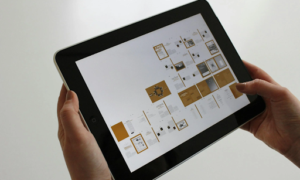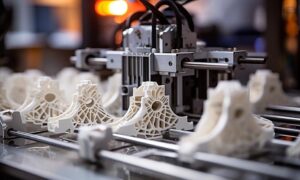The modern business world is fast-paced and fiercely competitive, driving companies to continuously search for innovative ways to stay ahead. One key area where companies can gain an edge is through the use of digital prototyping in product development. 3D concept design can help businesses make their product development process faster, cheaper, and more efficient by making detailed and realistic visualizations of product designs.
The use of 3D concept design has revolutionized product development in recent years. This technology allows designers and engineers to create and enhance product designs in a digital realm, resulting in streamlined and cost-efficient development procedures.
Designers have the advantage of quickly and easily visualizing their ideas in three dimensions with this technology. This allows them to create detailed, realistic models that accurately represent their vision for the final product. The ability to visualize designs in three dimensions allows designers to experiment with different variations and make real-time adjustments, ultimately leading to more effective product development. This is more efficient than traditional design processes.
Computer-aided design also promotes better teamwork and cooperation among designers and other stakeholders involved in the product development process. By sharing 3D models, teams can more easily communicate their ideas and work together to refine designs. Using computer-aided design promotes better communication and understanding among designers and stakeholders, resulting in a final product that satisfies everyone’s requirements.
By using 3D design, businesses can create highly detailed and accurate models of their products. This allows them to identify potential issues and make necessary adjustments before the product goes into production. By catching potential problems early on, companies can avoid costly mistakes and reduce waste, resulting in significant cost savings. Additionally, because 3D design enables designers to experiment with various design options and test out their ideas in a virtual environment, companies can save money on physical prototypes and testing.
How can it help businesses gain a competitive advantage?
Implementing digital prototyping can help businesses gain a competitive advantage in various ways.
3D modeling can help businesses create more innovative and unique products. Designers can use 3D modeling to experiment with different design options and test their ideas without actually producing anything. Utilizing 3D modeling technology can result in products that stand out in the market with superior aesthetics and functionality, providing a competitive advantage.
In the healthcare industry, this concept design has revolutionized the creation of prosthetics. Prosthetics can now be designed to match the unique anatomy of each patient, thanks to this technology. This is particularly beneficial for personalized prosthetics, such as those for amputated limbs or facial features. Using 3D design technology enables designers to take precise measurements and make customized adjustments, ensuring that each prosthetic is specifically tailored to the patient’s individual needs.
By creating 3D models of vehicle components and simulating their performance in a virtual environment, automotive engineers can identify potential issues and make necessary adjustments before physically producing the parts. By utilizing 3D design, businesses can cut down on development expenses and produce higher-quality products. 3D product visualization and prototyping in the consumer goods industry has the potential to accelerate the product development cycle by enabling faster and more accurate design testing, ultimately resulting in more precise product designs and quicker time to market. This can lead to greater customer satisfaction with the products.
In the architecture and construction industry, 3D design can help architects and builders create more accurate and detailed models of buildings and structures. This can lead to better communication with clients and more efficient construction processes, ultimately resulting in cost savings and improved project outcomes. 3D design software can help architects and builders create detailed building models and visualize the end result before construction starts. This helps to reduce errors and miscommunications between architects, builders, and clients, leading to more efficient construction processes and ultimately cost savings for businesses.
3D modeling and simulation can also help businesses reduce time-to-market for new products. By adopting efficient product design and testing methods, businesses can gain a competitive advantage by bringing products to market faster than competitors who still rely on traditional development methods.
By implementing this concept design, businesses can improve collaboration between teams and departments involved in the product development process. 3D models can be easily shared and modified, allowing for better communication and collaboration among team members. 3D design technology provides a significant advantage to businesses looking to innovate and stay ahead of the competition in the product development industry.
In conclusion, 3D concept design has become an essential tool for businesses looking to gain a competitive advantage in product development across various industries. It has transformed the process of designing, testing, and launching products by providing improved efficiency, accuracy, and collaboration. As technology continues to progress, we can expect 3D design to play an increasingly significant role in product development, giving companies an advantage in meeting changing consumer demands.



































